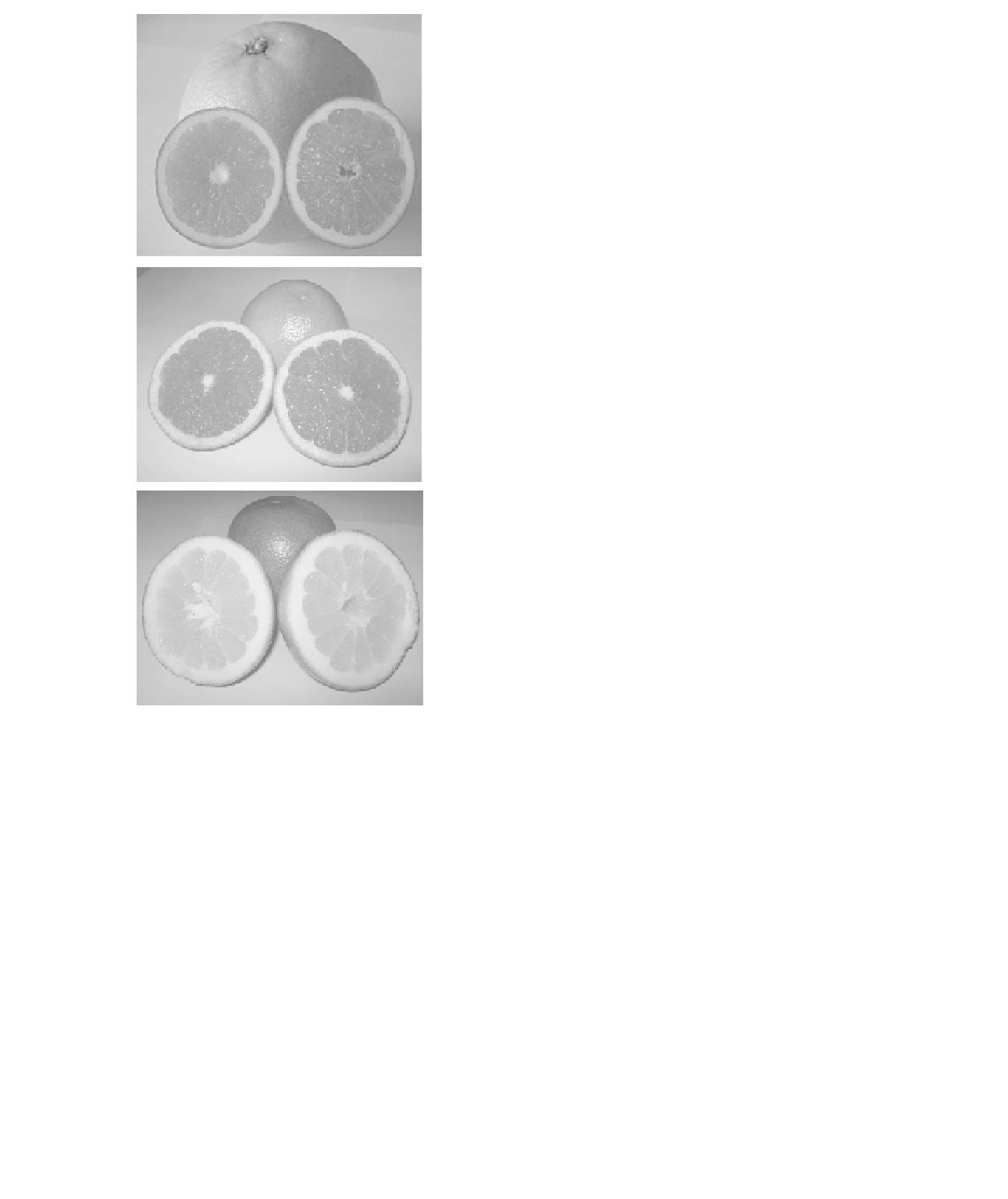Agriculture Reference
In-Depth Information
average. Consumption figures for the UK and Benelux are
also slightly higher than average. The consumption is dis-
tinctly low in most of the countries in southern Europe,
which are nonetheless often producers, and in Germany
(FAO, 2004).
The significance of grapefruit to human health has
received great attention (Yee et al., 1995; Lee et al.,
1999; Goldfarb and Asplin, 2001; Trinchieri et al., 2002;
Girennavar et al., 2008), giving rise to a variety of grapefruit
products (Weiner and Nussinovitch, 1994) and preparations
such as grapefruit jam (Igual et al., 2010a), grapefruit-
avocado salad, grapefruit jelly beans, radicchio salad grape-
fruit, cinnamon sugar grapefruit cake, dessert grapefruit,
champagne sorbet, grapefruit bread (healthy grapefruit
ginger bread), blueberry-grapefruit salad, grapefruit julep
cocktail, grapefruit bars, grapefruit tarts, 100% grapefruit
juice, grapefruit marmalade, grapefruit galettes, grapefruit-
pomegranate cocktail, and grapefruit chicken pita.
Various refreshing, flavorful, delicious, and premium or-
ganic grapefruit juices are now available with health ben-
efits. A delicious blend of mellow ruby reds and robust
whites, a 100% pure Florida organic grapefruit juice, is a
great alternative to the morning juice glass. Increasingly,
juices, such as “Uncle Matt's grapefruit juice,” are made
“not-from-concentrate,” flash-pasteurized and certified or-
ganic. There are a bounty of health benefits derived from
grapefruit's powerful phytonutrients, such as free radical
fighting lycopene and disease-deterring limonoids (Hub-
pages, 2010).
Grapefruit can help in weight loss since it is low in
sodium and high in fat-burning enzymes. Low sodium in-
take can help flush out excess water caused by high-sodium
food. Grapefruit is high in water content, which helps in-
crease metabolism, and rich in lycopene, helping in the
prevention of tumors and cancer. It is a liver tonic, a pow-
erful drug-poison eliminator, which helps in cases of gall-
stones, cold, pneumonia, fever, and proper digestion of food
(Hubpages, 2010).
Figure 19.3.
Different colors of grapefruit and
cutting grapefruit sections; light yellow peel (top),
red pulp (middle), and sweetie-green peel (bottom).
For color detail, please see color plate section.
countries as levels of income increase. Annual average con-
sumption per capita was stable at about 1.2 kg for most
of the decade. This trend has become more marked since
2004-2005 because of a serious decrease in supplies re-
sulting from production problems in the United States of
America. Consumption per person was thus less than 900 g
per year in 2005. This is well short of the consumption in
other large world markets such as in the United States and
Japan. This downward trend has been particularly marked
in France and even more so in Germany while Italy and the
UK have been less affected. However, France is still the only
EU country in which the consumption is distinctly above
POSTHARVEST PHYSIOLOGY AND STORAGE
TECHNOLOGIES
Respiration rate and ethylene production
Arpaia and Kader (2000) reported that grapefruit is a non-
climacteric fruit and thus does not have a typical ripen-
ing pattern, that is, increased respiration rate and ethylene
production. They reported a respiration rate of
10 mg
CO
2
/kg/hr at optimum storage temperature. The ethylene
production rate is typically
<
0.1
μ
l/liter/hr at 20
◦
C.
<

Search WWH ::

Custom Search